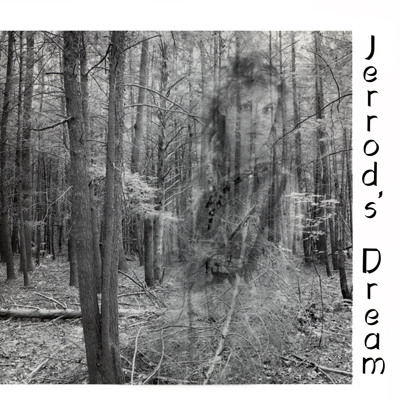Jerrod’s Dream was the first real ‘album project’ I was involved in. College pal Katherine Sullivan approached me to flesh out a song of hers with the intent of taking it to some studio musicians to record a single.
I had her record the vocals for “Morning Rain” acapella to a click, then set to work. About a week later she came back to hear the results and was so excited about how it came out that the conversation instantly went to ‘let’s do an album, dammit!’
It was a strange and wonderful experience, I had very little experience in anything resembling a real studio, so trying to suss out how to take my musical constructs that were tied to a couple keyboards and synth modules, guitar, bass and drum machine all sequenced and crammed onto my stalwart 4-track cassette deck. We ended up picking ten songs of the twenty-ish we had screwed around with. One of the victims of ‘limited album space’ was actually the title song, “Jerrod’s Dream”, as Katherine had been fighting with herself over the meter she wanted it to be in. We did our ‘writing’ version in 4/4, but she started to think a waltz might be cooler. Unfortunately the studio time was already booked and only a couple days out and even at my best and fastest I don’t know if I could have re-tooled all the bits to 3/4 time that quickly and had it be any good. She was super disappointed, but when I suggested that maybe it could be the name of our band/album, she perked right up.
I contacted Bill Norton, my old high-school best friend who was a lead guitarist, but had shifted to bass and was playing in a big-time cover band in Chicago. He came down and sat in on the sessions. It was awesome to see him again.
We loaded in to Rob Curren’s brand-spanking new “Madison Park Productions” in the basement of his Oakely home. So brand-spanking-new that he was finishing soldering up the last few patch bay terminals while we were sorting out where to locate which piece of gear.
The album was recorded over a couple/three weeks along with future dear friend and Collins Gate bandmate Joyce Bentle on viola, keyboards and some backing vocals.
We recorded on a Fostex 1/4″ 16-track tape deck, and having so many more tracks to play with was such a relief after so much track-bouncing just to get a song done on the 4-track.
The album was released in ’89, and I was pretty happy with my contribution as ‘composer/producer’. I also had taken my first real crack at lyrics for something other than my own weird stuff I’d been screwing around with in the past, and about half the tunes came out of that process.
The issue for me production-wise was that I simply didn’t have the gear to get the sounds we both really wanted. I wasn’t making a ton of money freelancing, so I was limited to what I already had on hand. All early digital synths (no analog, as bad as I wanted it), guitar through a Tom Scholz Rockman headphone amp, and a relatively limited (but great for it’s day) Alesis D4 drum module.
It was what it was, and we pressed to vinyl (which was awesome!), released it and as with most local band releases, it kinda fizzled since we really didn’t have any way to take it live to promote it. We tried to sort it out, but life happened. Still, it was a great experience.
Fast forward to 2009 – I was working at the University of Cincinnati managing a high-end video production team for campus. One of my friends ran the CCM recording studio, and while I was hanging out down there one day I saw another Fostex 16 track deck shoved into a corner. I lit up, and he let me borrow it. I contacted Rob Currens, and he still had the 1/4″ masters, so I picked them up and proceeded to digitize the whole album from raw tracks. The tapes were old enough that they were shedding oxide and sticking to the play heads causing heavy warbling of the sound (speeding up, slowing down) to the point where it was unusable, so I had to take them down to Sound Images, one of the best studios in Cincinnati to my dear friend and wizard Jay Petach. He took the tapes and baked them in a convection oven. I can’t recall the exact settings, but it was something like “exactly 116 degrees for 8 hours”, and it essentially sucks any moisture out of the tape substrate and makes them perfect again.
And they were, so I tried again, got all the tracks into my evil little system, and began playing.
I kept as many of the signature synth sounds as made sense, but was free to explore all sorts of killer analog patches from a stack of virtual synths I had recently purchased. It was like Wizard of Oz going to color. I also redid -most- of the guitar work using a better amp and replaced all the drums. The results were soooo satisfying and I finally understood why bands sometimes remix old work. You can debate the ‘purity of the moment’ vs. ‘the intent that could not be achieved at the time’ for years, and I honestly don’t know if there’s a right answer, but I learned a ton from the process.
Anyway – here are a few selects from said process, and I still think the songs are pretty dope.
